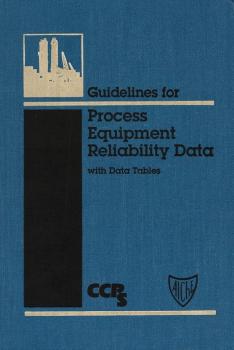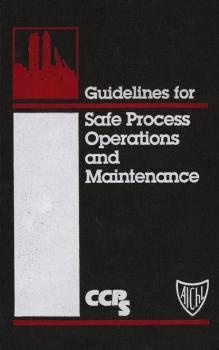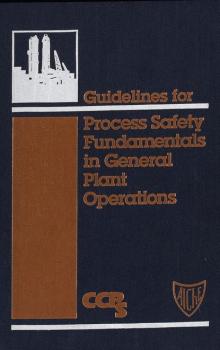ТОП просматриваемых книг сайта:















CCPS (Center for Chemical Process Safety)
Список книг автора CCPS (Center for Chemical Process Safety)Dealing with Aging Process Facilities and Infrastructure - CCPS (Center for Chemical Process Safety)
Аннотация
Информация о книге
Автор произведения CCPS (Center for Chemical Process Safety)
Guidelines for Improving Plant Reliability Through Data Collection and Analysis - CCPS (Center for Chemical Process Safety)
Аннотация
Информация о книге
Автор произведения CCPS (Center for Chemical Process Safety)
Safe Design and Operation of Process Vents and Emission Control Systems - CCPS (Center for Chemical Process Safety)
Аннотация
Информация о книге
Автор произведения CCPS (Center for Chemical Process Safety)
Guidelines for Fire Protection in Chemical, Petrochemical, and Hydrocarbon Processing Facilities - CCPS (Center for Chemical Process Safety)
Аннотация
Информация о книге
Автор произведения CCPS (Center for Chemical Process Safety)
Аннотация
Информация о книге
Автор произведения CCPS (Center for Chemical Process Safety)
Аннотация
Информация о книге
Автор произведения CCPS (Center for Chemical Process Safety)
Guidelines for Initiating Events and Independent Protection Layers in Layer of Protection Analysis - CCPS (Center for Chemical Process Safety)
Аннотация
Информация о книге
Автор произведения CCPS (Center for Chemical Process Safety)
Guidelines for Process Equipment Reliability Data, with Data Tables - CCPS (Center for Chemical Process Safety)
Аннотация
Информация о книге
Автор произведения CCPS (Center for Chemical Process Safety)
Аннотация
Информация о книге
Автор произведения CCPS (Center for Chemical Process Safety)
Guidelines for Process Safety Fundamentals in General Plant Operations - CCPS (Center for Chemical Process Safety)
Аннотация
Информация о книге
Автор произведения CCPS (Center for Chemical Process Safety)










